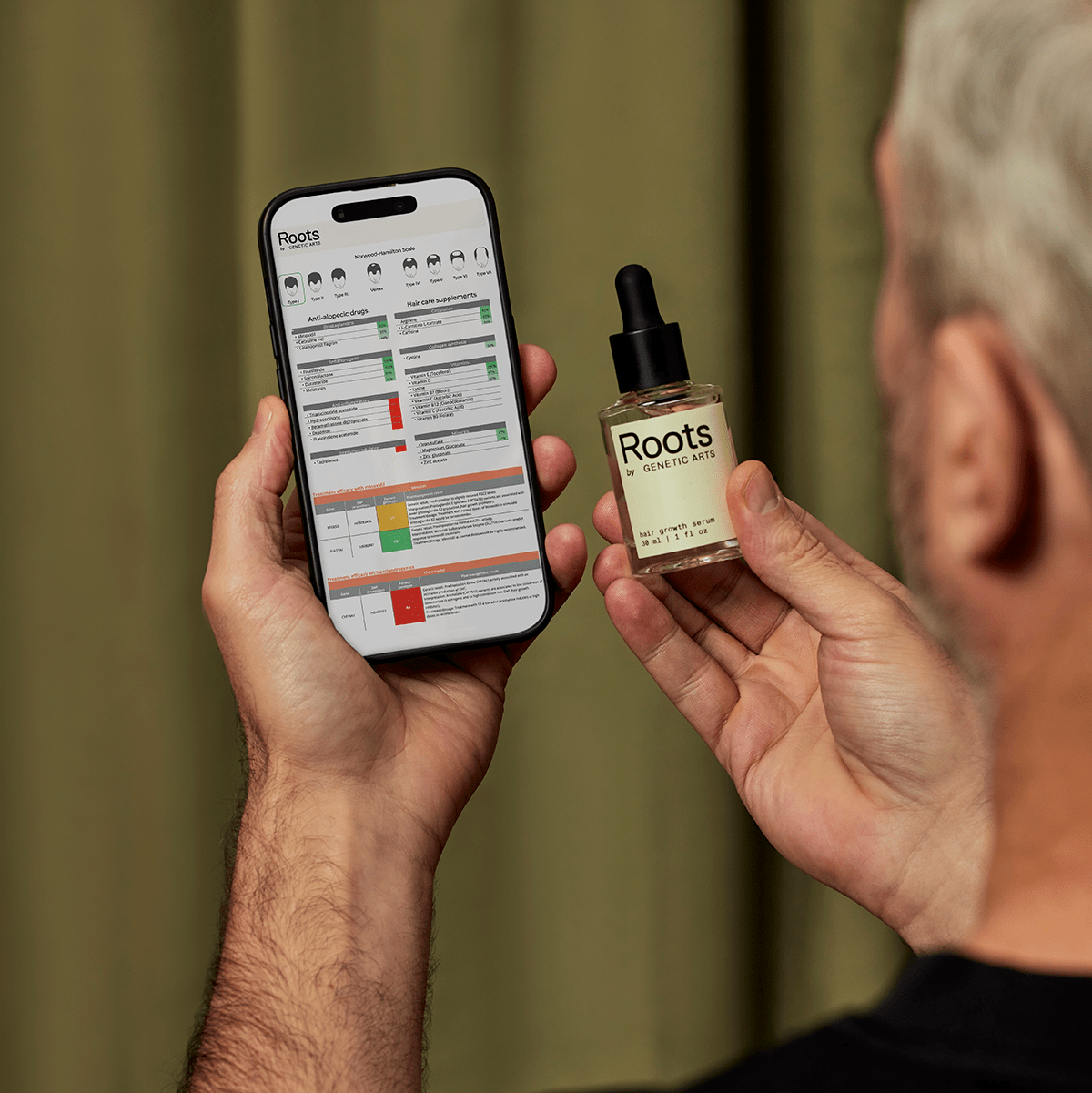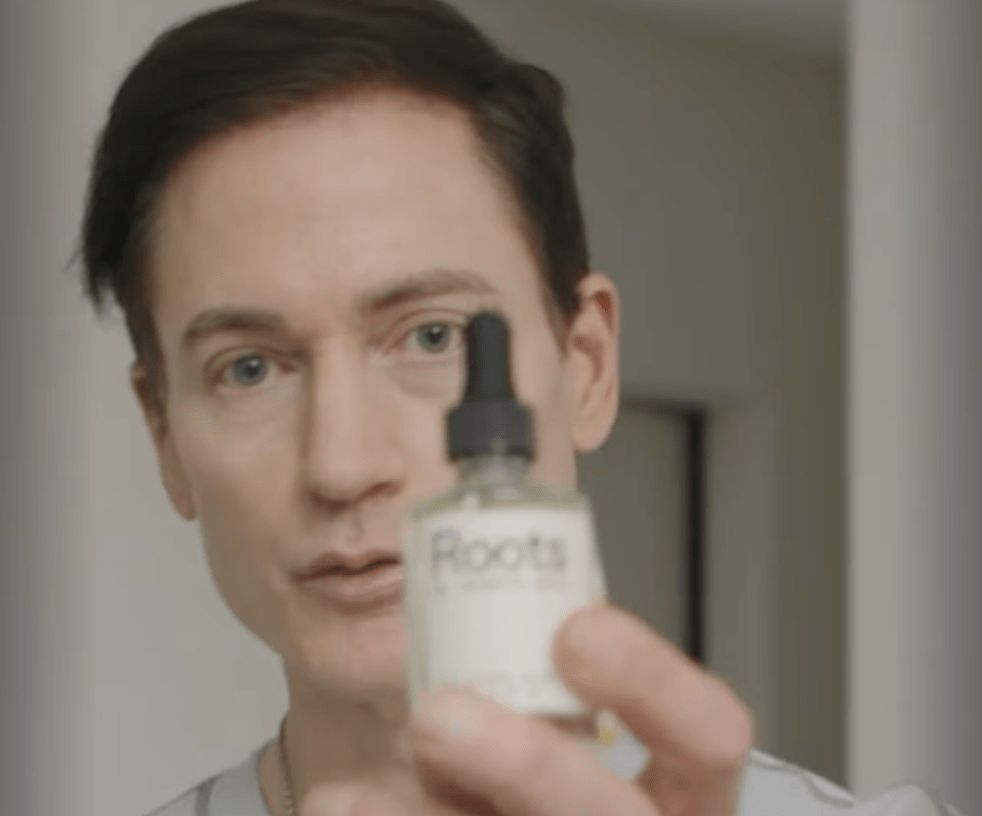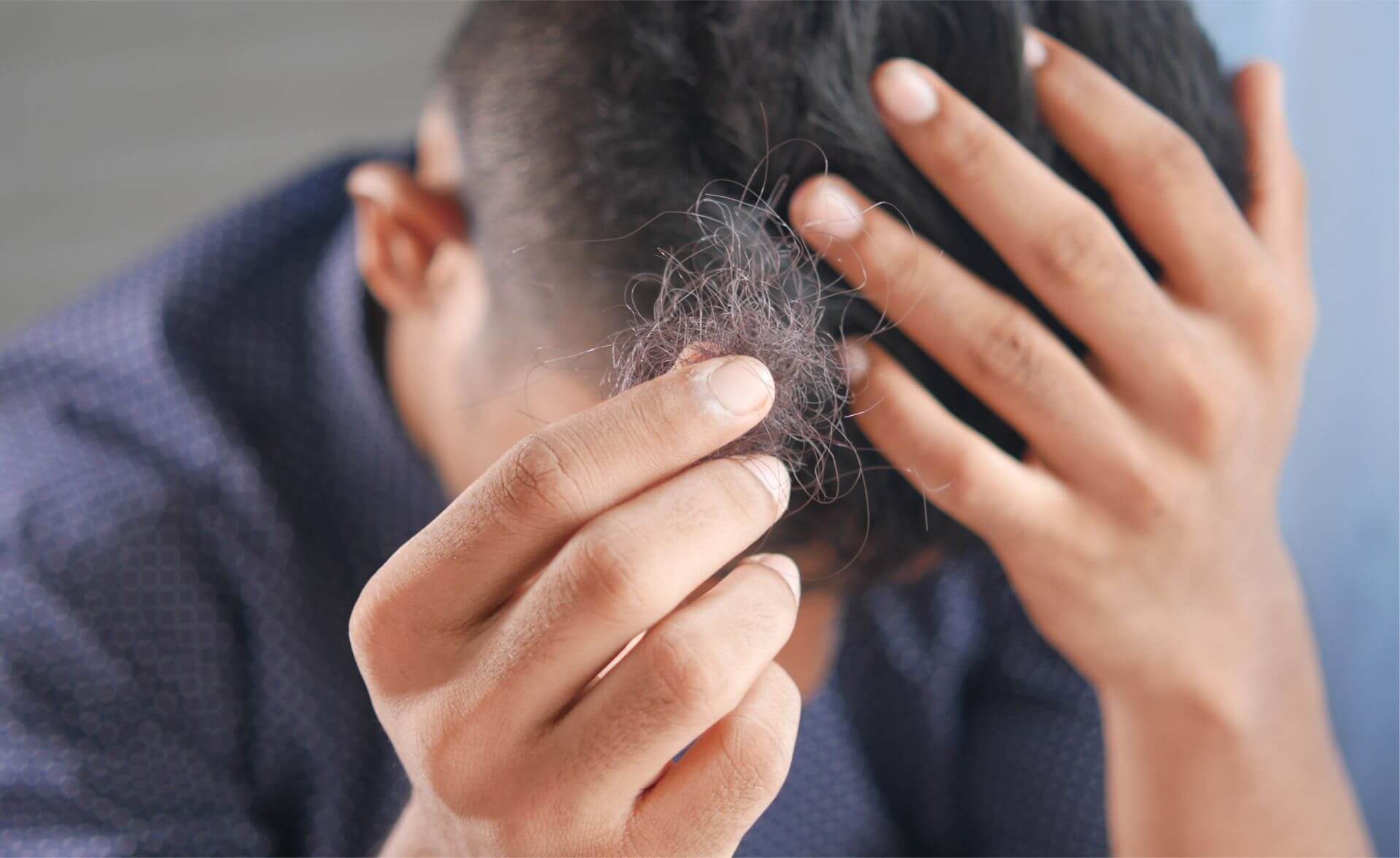28 Jan 2024
Unlocking Your Hair Growth Potential with a Custom Combination Approach

Share
At Roots by Genetic Arts, we understand that hair loss is a complex issue influenced by various factors, including genetics, hormones, and lifestyle. While traditional monotherapies like minoxidil or finasteride have shown effectiveness, a combination approach often delivers better results.
Why Custom Combination Therapies Are More Effective
Combination therapies target multiple pathways involved in hair loss, providing a more comprehensive treatment strategy. For instance, combining finasteride, which reduces dihydrotestosterone (DHT) levels, with minoxidil, which stimulates hair follicles by increasing blood flow, can yield superior results compared to using either treatment alone.
The Role of Relevant Biomarkers
Hair loss treatments are not one-size-fits-all. Individual responses to treatments like finasteride or minoxidil can vary due to genetic differences. Relevant biomarkers, such as those related to DHT sensitivity or how your body metabolizes certain compounds, can play a role in determining a beneficial treatment for you.
For instance:
- SULT1A1: This enzyme is crucial for the activation of minoxidil. Genetic variations in the SULT1A1 gene can influence how effectively minoxidil promotes hair growth. If someone has a lower activity level of this enzyme, minoxidil might not be as effective.
- SRD5A2/1: These genes are involved in the metabolism of testosterone to DHT. Individuals with variations in these genes might experience different levels of DHT and thus respond differently to finasteride.
- ACE:Angiotensin-converting enzyme (ACE) variants are associated with increased plasma levels of angiotensin 2, an extremely potent vasoconstrictor. A customer with this gene expression may benefit from caffeine.
Pharmacogenetic Testing for a Custom Approach
At Roots by Genetic Arts, we utilize pharmacogenetic testing and a comprehensive questionnaire to help customize hair loss treatments. This testing analyzes various genes related to hair loss treatments, and utilizing the intake questionnaire, we’re able to provide a custom topical with multiple active ingredients tailored to your needs.
Below are some commonly used ingredients and how they contribute to hair regrowth:
- Minoxidil
- Mechanism: Minoxidil works by opening potassium channels in the cells of hair follicles, which enhances blood flow and nutrient delivery to the hair follicle. This increased blood flow helps to enlarge miniaturized hair follicles and prolong the anagen (growth) phase of the hair cycle, resulting in thicker, healthier hair growth.
- Finasteride
-
- Mechanism: Finasteride inhibits the Type II 5-alpha reductase enzyme, which is responsible for converting testosterone into dihydrotestosterone (DHT). High levels of DHT are associated with the miniaturization of hair follicles in androgenetic alopecia. By reducing DHT levels, finasteride prevents the shrinking of hair follicles, thereby promoting the growth of thicker hair.
-
- Dutasteride
-
- Pathway & Mechanism: Similar to finasteride, dutasteride inhibits both Type I and Type II 5-alpha reductase enzymes, making it more effective at reducing DHT levels throughout the body. This broader inhibition results in a more substantial decrease in DHT, providing a potent solution for preventing hair follicle miniaturization and promoting regrowth.
-
- Latanoprost
-
- Mechanism: Latanoprost, a prostaglandin F2α analog, binds to prostaglandin receptors in the hair follicle. This binding action prolongs the anagen phase and increases the size of the hair follicles, promoting the growth of thicker and darker hair.
-
- Cetirizine
-
- Mechanism: Cetirizine is an antihistamine that blocks histamine receptors, reducing inflammation and potentially calming the scalp. Reduced inflammation can help prevent hair follicle damage and promote a healthier scalp environment, conducive to hair growth.
-
- Spironolactone
-
- Mechanism: Spironolactone acts as an anti-androgen by blocking androgen receptors, which reduces the effects of androgens like testosterone on the scalp. This reduction is particularly beneficial for women experiencing hair loss due to high androgen levels.
-
- Caffeine
-
- Mechanism: Caffeine may help hair follicles stay in the growing phase longer, which can lead to longer, stronger hair. It can also improve blood circulation to the follicles, enhancing nutrient and oxygen delivery.
-
- Tretinoin/Retinoic Acid
-
- Mechanism: Tretinoin increases cell turnover in the scalp, which helps remove dead skin cells and improve the scalp environment for hair growth. Additionally, it enhances the absorption of other topical treatments, such as minoxidil, making them more effective.
-
- Melatonin
-
- Mechanism: Melatonin acts as an antioxidant and anti-inflammatory agent, reducing oxidative stress and inflammation around the hair follicles. These protective effects help maintain a healthier scalp and prolong the growth phase of hair follicles.
-
- Vitamin D
-
- Mechanism: Vitamin D plays a role in hair follicle cycling by influencing the differentiation of keratinocytes, the cells that make up a large portion of hair. It can help regulate the growth and shedding phases, reducing hair shedding and promoting regrowth.
-
Roots by Genetic Arts can create a custom topical for your hair growth needs. Ready to take control of your hair health? Start your personalized regrowth journey today with Roots by Genetic Arts!
Roots by Genetic Arts
28 Jan 2024
Thanks for your order!
Login into your profile to set up your account.






